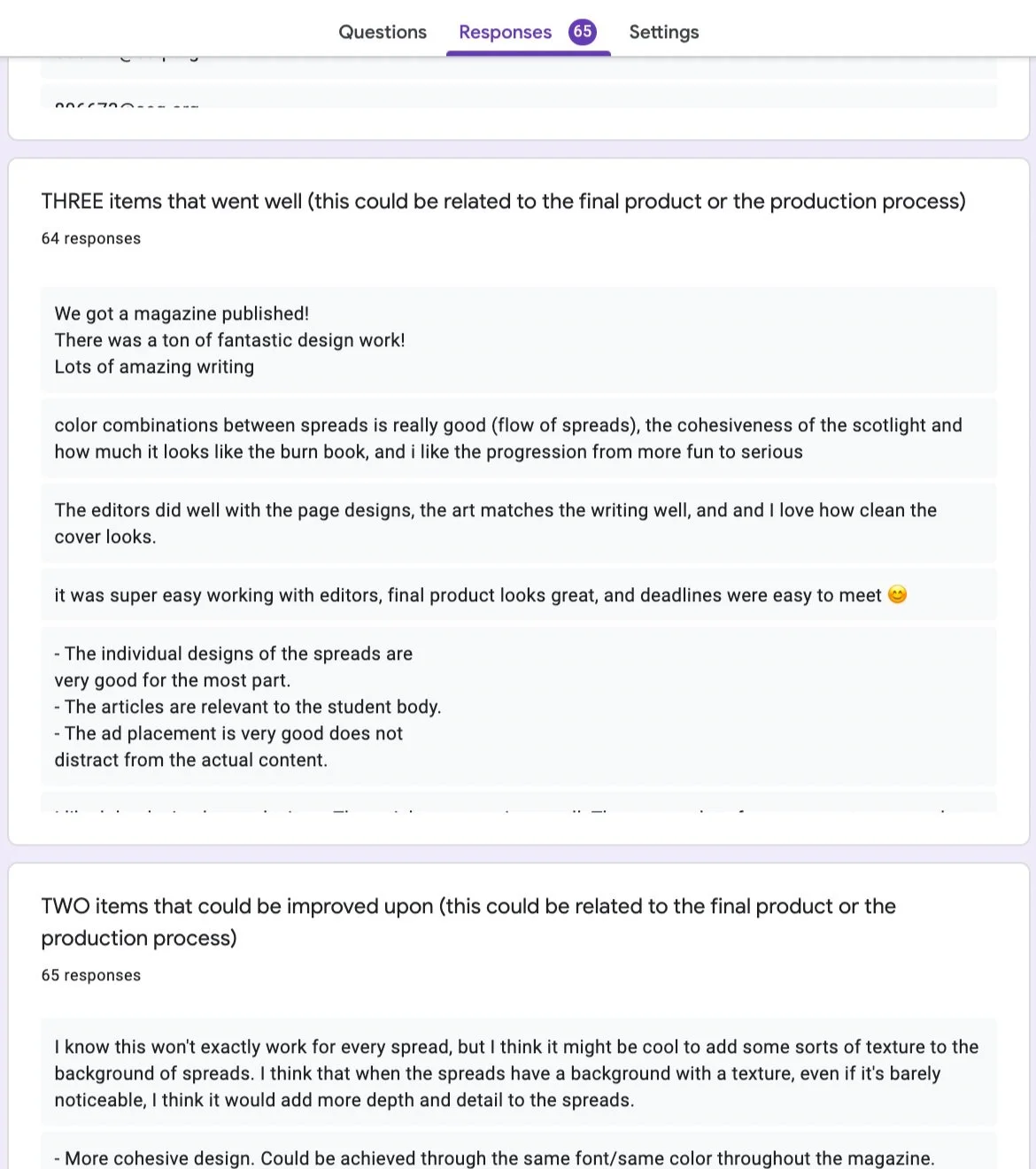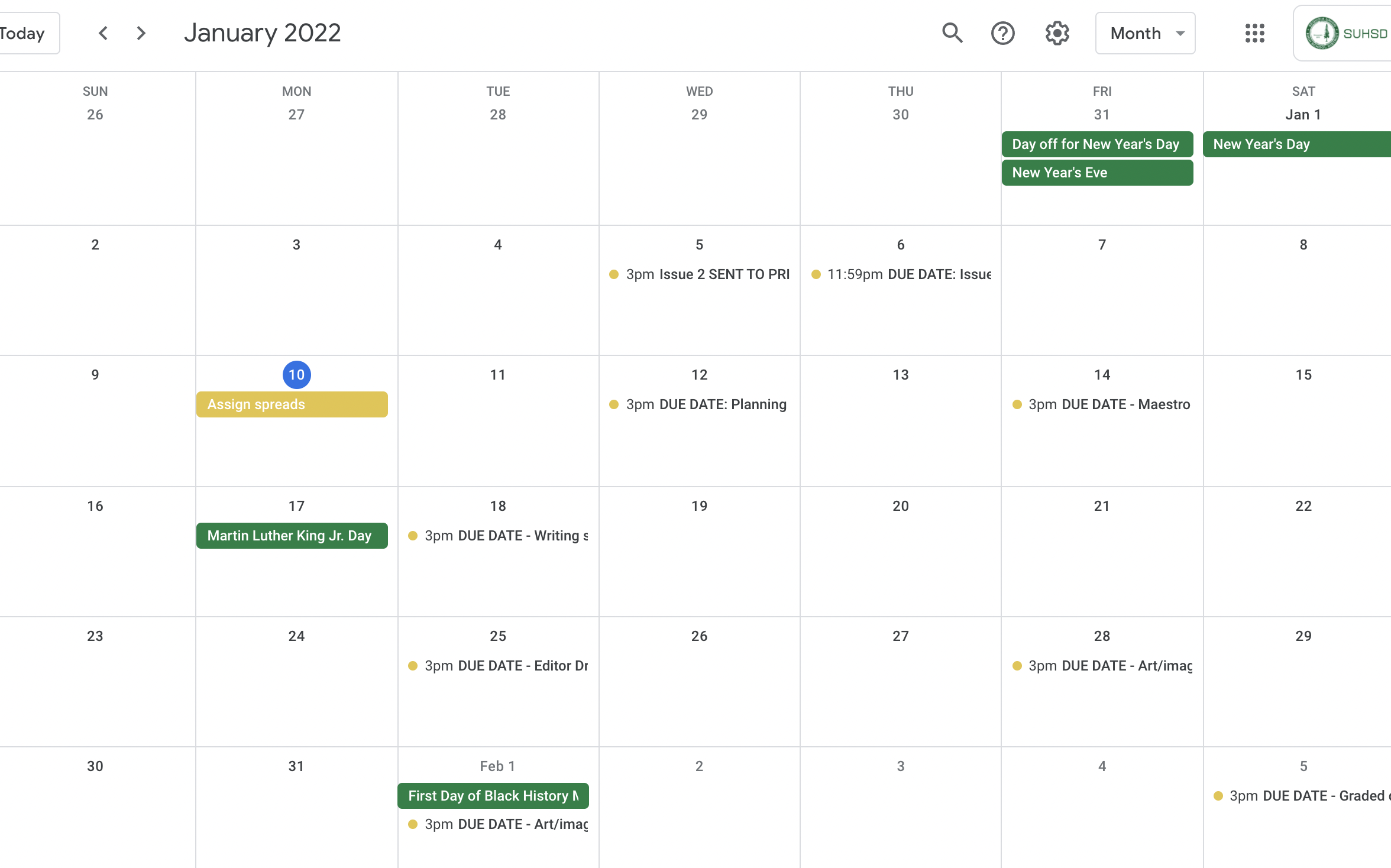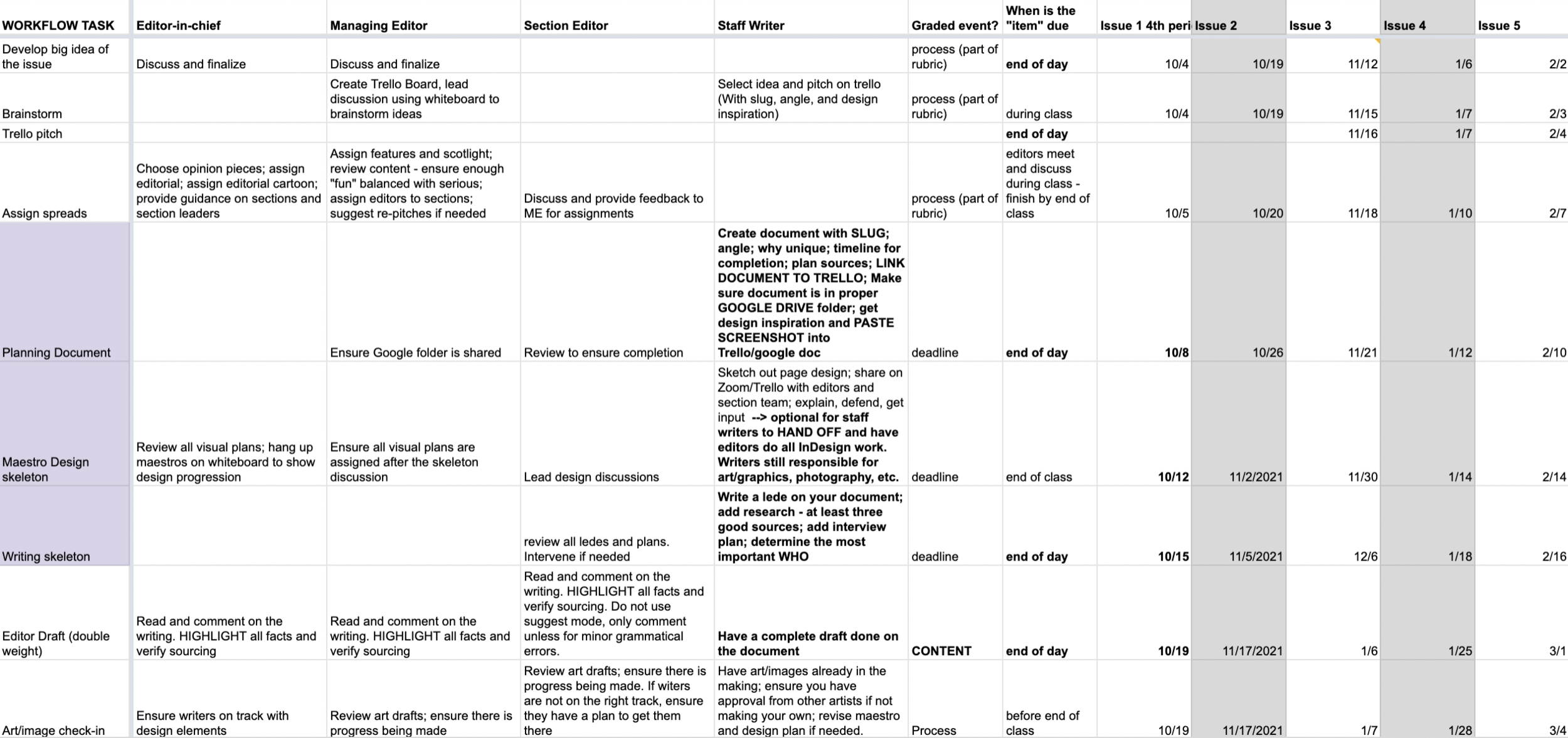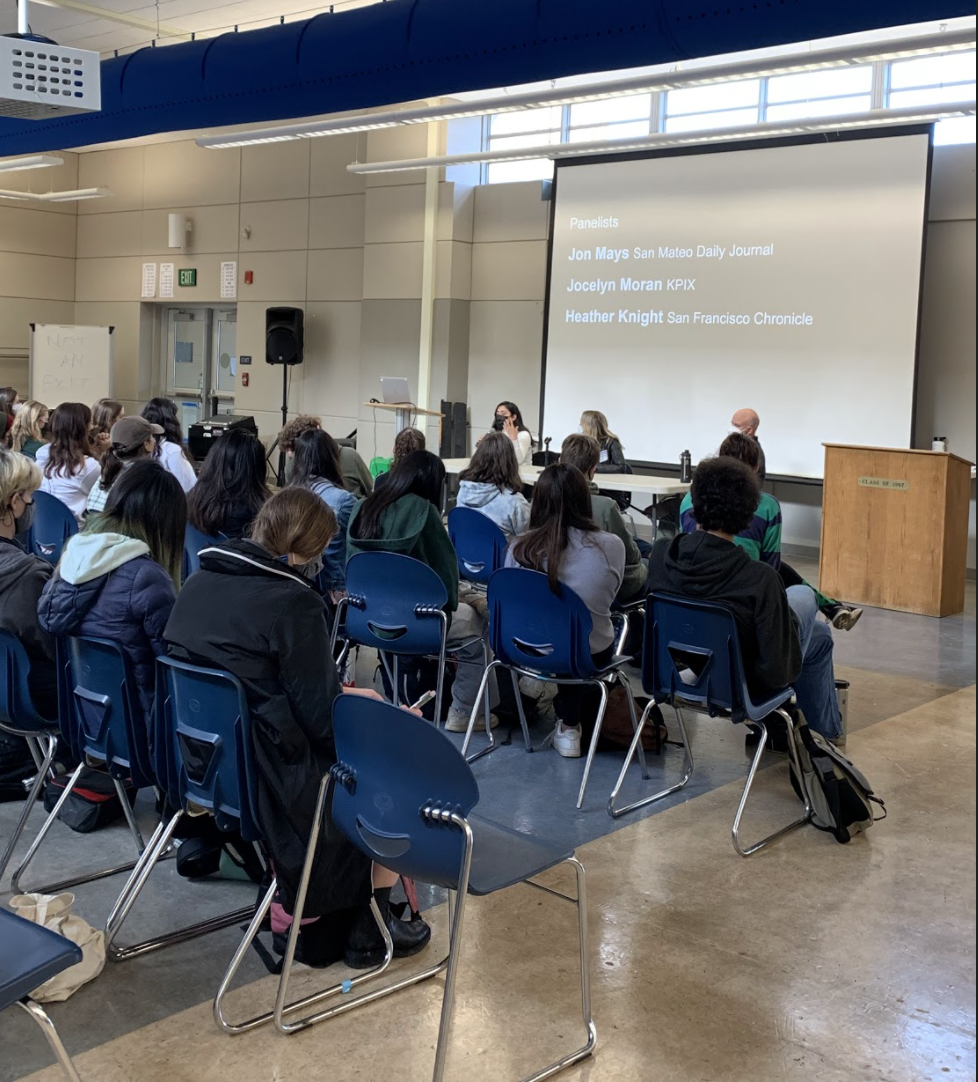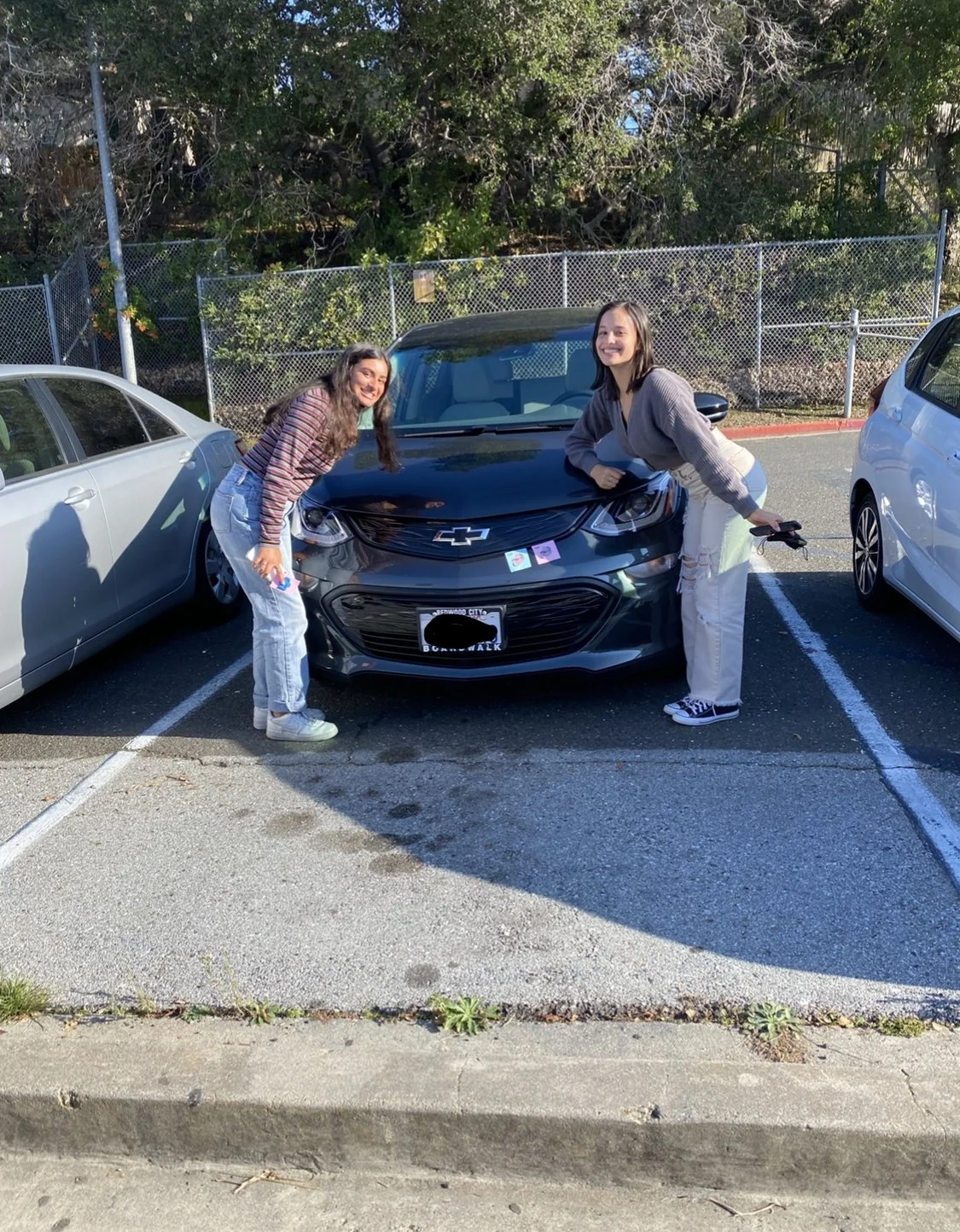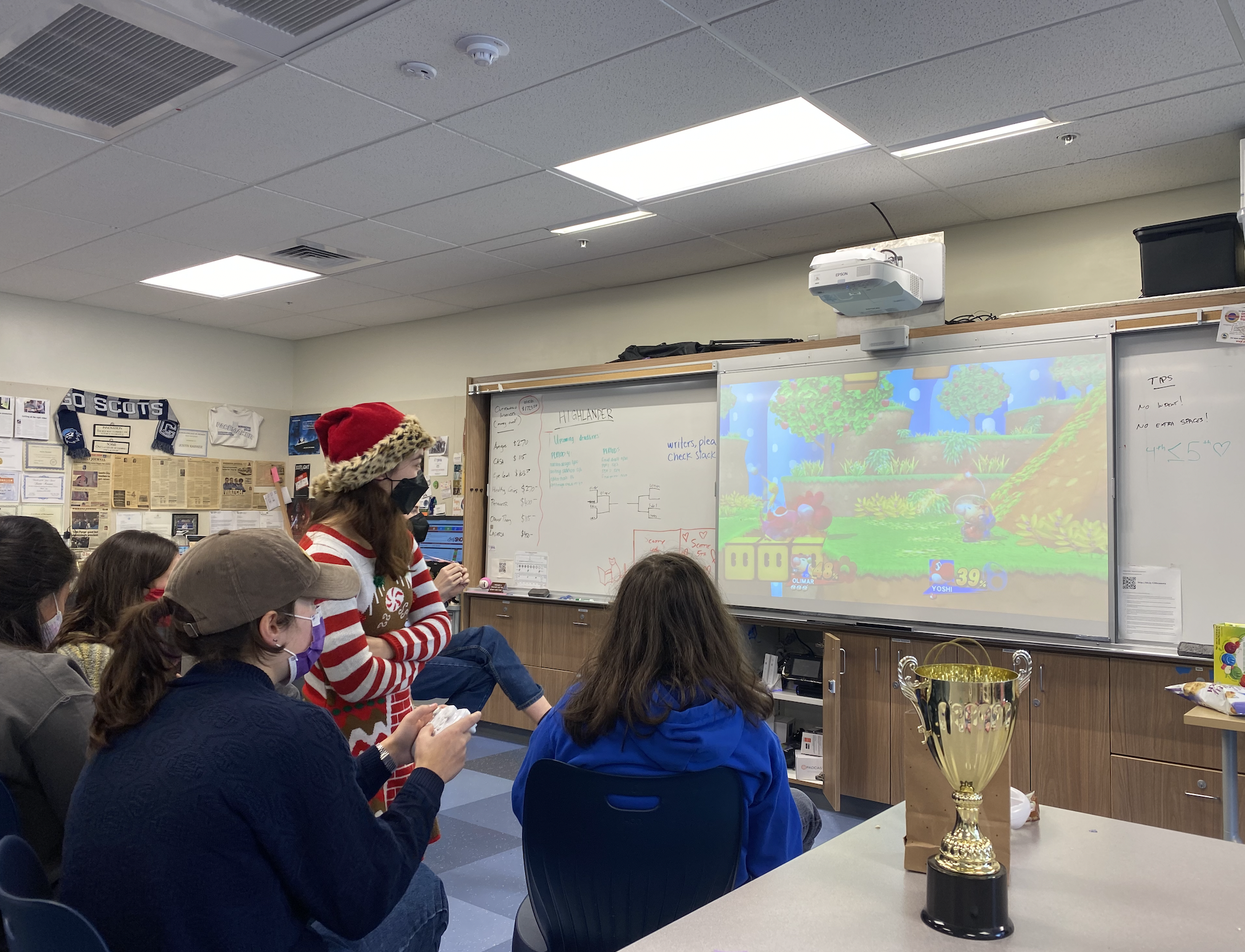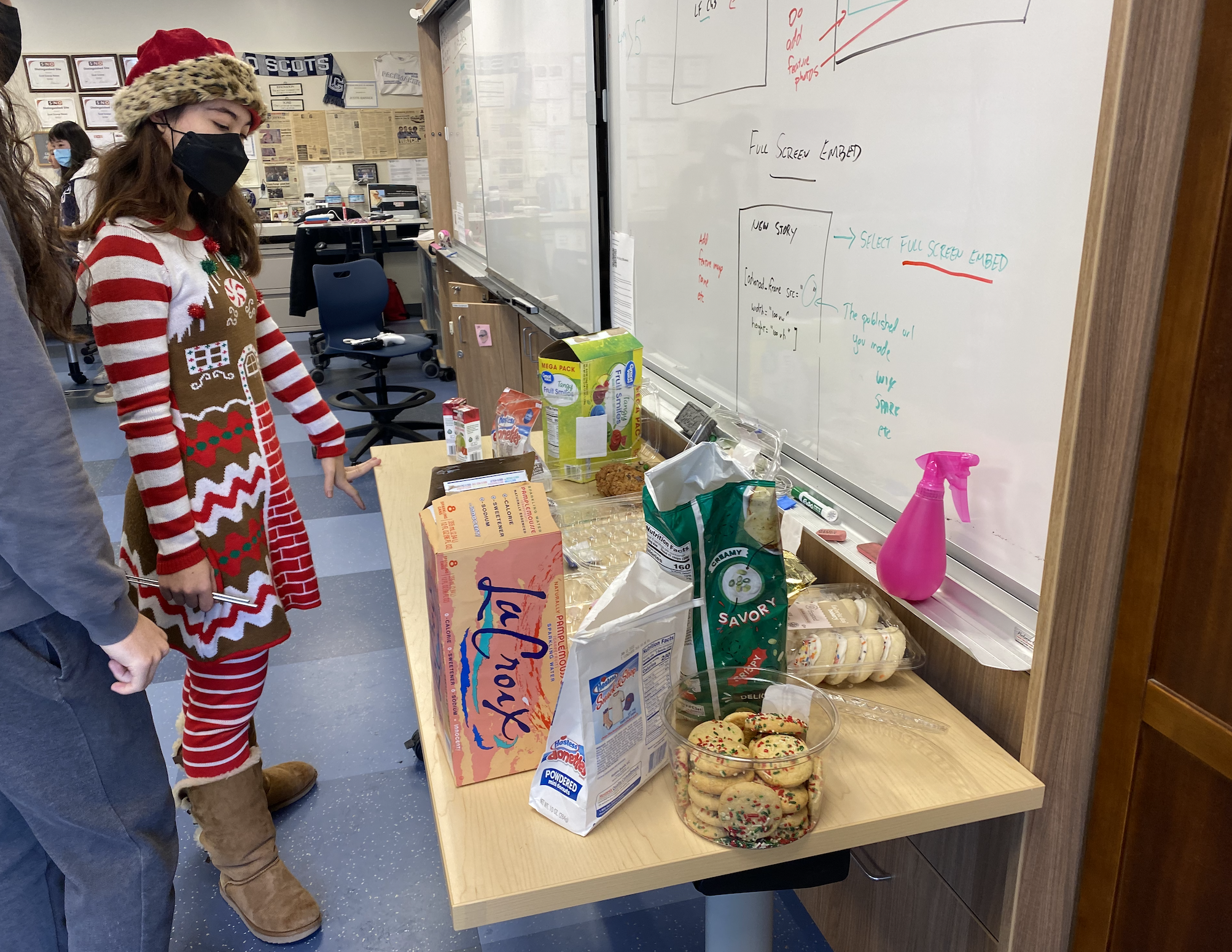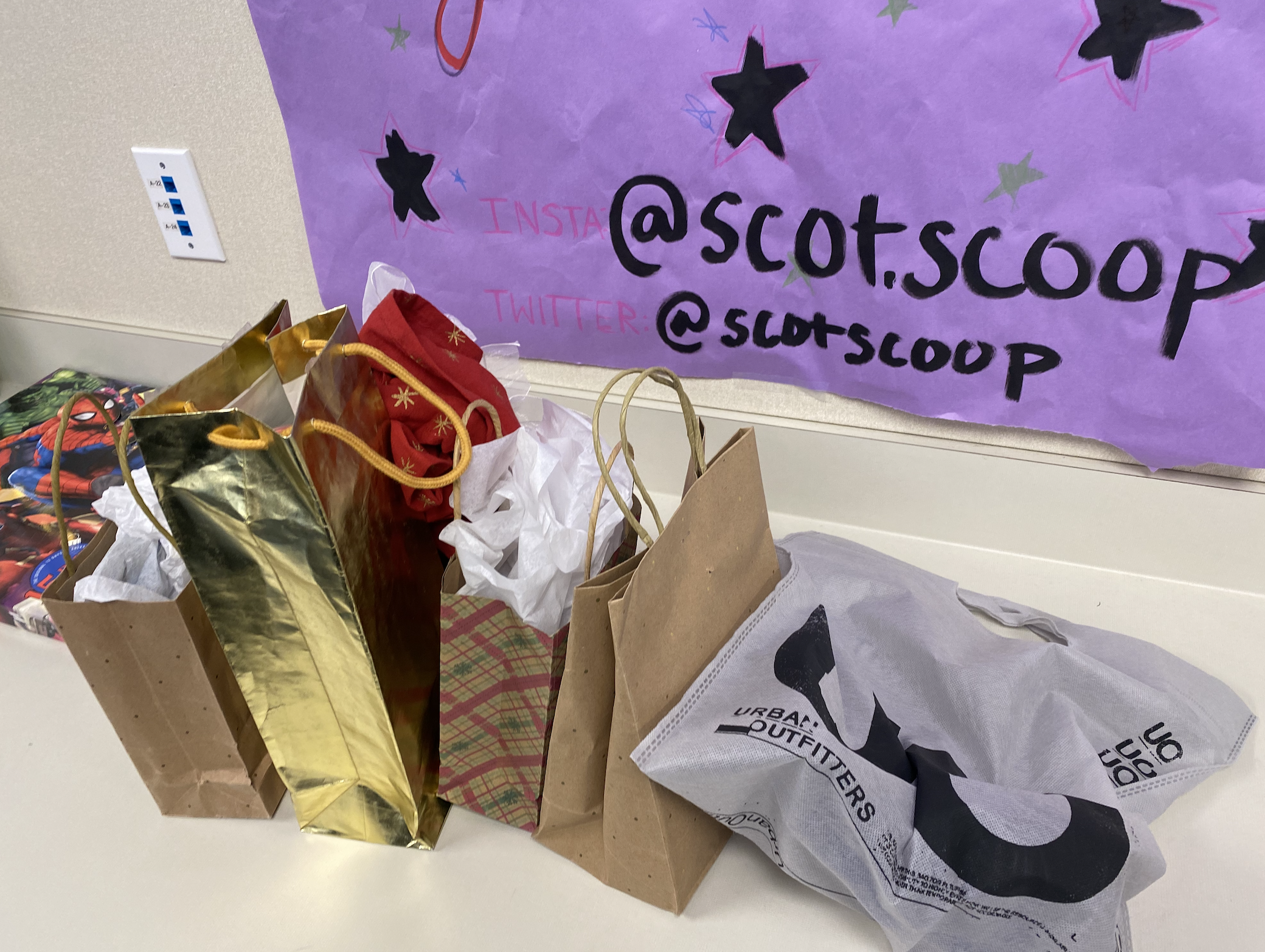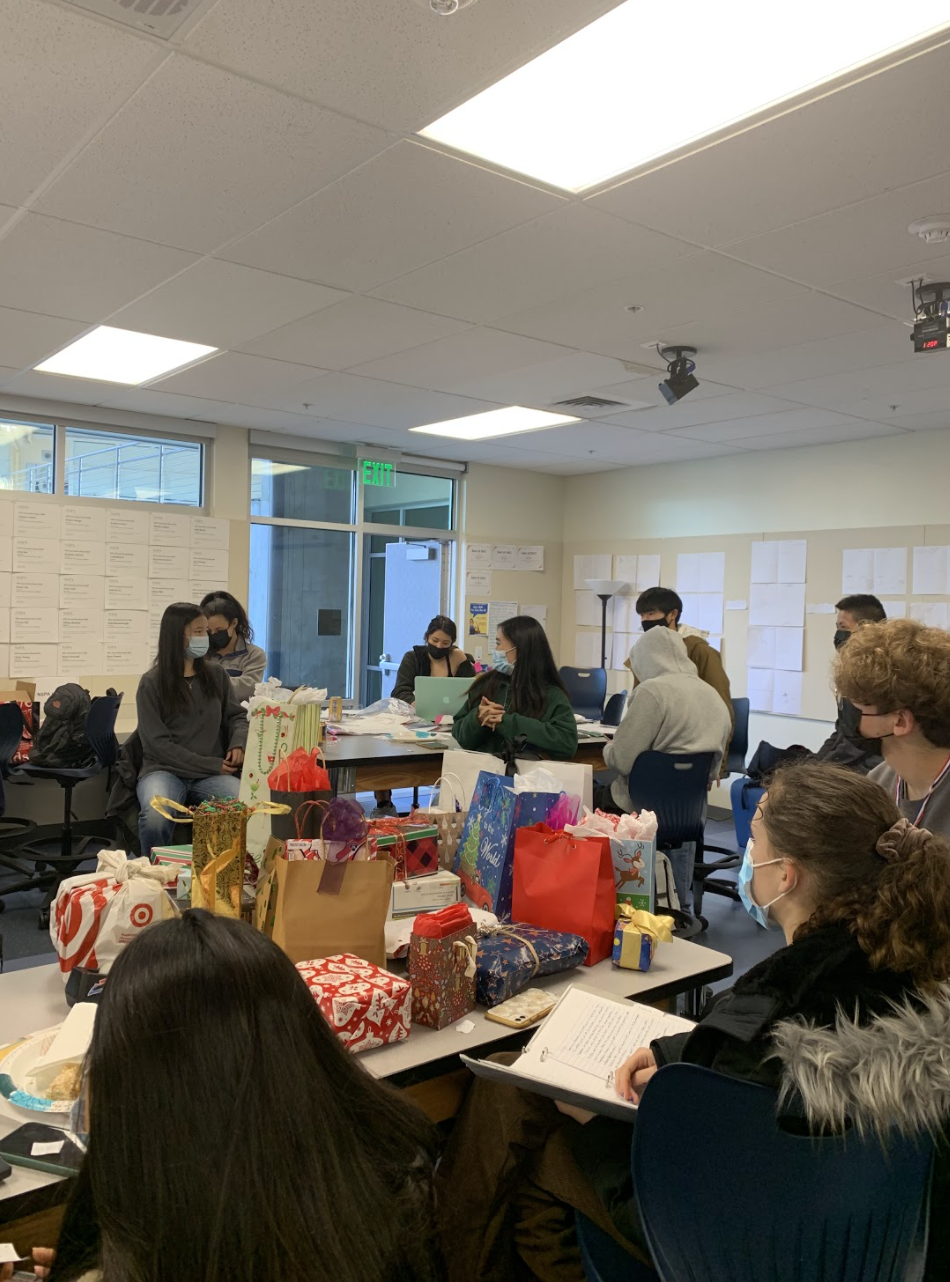EDITING
As an editor for the Daily Californian and former Editor-in-Chief of the Highlander, clarity, structure, voice, grammar and journalistic integrity are vital aspects of the job. Below are examples of my personal editing process.
LEADERSHIP
My leadership roles range from guiding classroom activities to teaching my editors design and editing skills. I seek to lead by example and promote a healthy, engaging classroom environment where journalism students feel comfortable to ask questions and share their ideas.
INSIDE THE CLASSROOM
In this presentation, I outlined what the Highlander editors should expect in the upcoming school year. After a year away in virtual learning, I primarily focused on design refreshers to get them in the editing mindset. Half of the Highlander editors were new to the team, so this presentation also served as a platform to introduce myself and the publication goals for the year. I also hoped to remind old and new editors alike about their design tools. The meeting concluded with a question-and-answer session regarding any publication and production process updates.
In the beginning of the school year, I knew I needed to introduce the incoming journalism juniors to the Highlander publication since they had not had experience with the newsmagazine yet. These presentations outline the expectations for the upcoming year, including workflow, issue division, and deadlines.
HIGHLANDER REFLECTION DAY
In my senior year, I wanted to ensure that writers and editors alike were satisfied with the Highlander workflow and final products of each issue. To organize feedback, I set a date after each issue to group together as a class, reflect on the process, and fill out our Google Form summarizing people’s thoughts. After the feedback, my managing editors and I considered each response in future issues of the newsmagazine.
From the 65 responses received after issues 1 and 2, I noticed patterns of successes and weaknesses alike. Many students commented that they needed more guidance with design as art deadlines approached, and we responded by reviving an art lesson activity for the juniors to complete. Some staff also felt they had limited contact with their editors during the design process, so I made sure to emphasize editor communication in upcoming issues.
BEYOND THE CLASSROOM
As Highlander’s former Editor-in-Chief, my leadership extended outside of the classroom, where I communicated with writers and editors through Slack and Microsoft Teams
EDITOR COMMUNICATION:
Highlander had the advantage of increased communication between the editors and writers alike during my senior year. As a publication, we improved communication inside the classroom and took advantage of the online tools we became accustomed to during the pandemic and virtual schooling. As a result, I frequently keep in touch with my editors during each production cycle, reminding them of upcoming deadlines and offering them a place to ask questions.
GOOGLE CALENDAR AND SHEETS
During the 2020-2021 school year, I noticed some areas of workflow organization that could be improved. Many students struggled to keep track of upcoming deadlines and weren’t sure what was due and when. To solve this problem, I created a Google Calendar and Spreadsheet for both periods that outlined the deadlines for each production cycle of Highlander.
Our Google Sheet organizer tracks deadlines for each issue and outlines what is expected from each member of the Highlander team that day. This year, I made significant updates in the workflow section and added our class-wide reflection day.
TEAM BUILDING
Collaboration is an essential aspect of the journalistic process, especially when it involves the production of a newsmagazine. But with a journalism class of over 65 students, it can be difficult to team-build as a group — especially during a year of distance learning. When we finally had the opportunity to return to school, I thought creatively about options to bond as a group and grow together as student journalists.
JOURNALISM CONVENTION
Due to the COVID-19 pandemic, the NSPA fall journalism convention was canceled for the second year in a row. Wanting to keep the convention spirit alive, I planned an “at-home convention” with the other Editor-in-Chiefs. Journalism students took off the day from their regular classes and participated in the convention from 9 a.m. to 3:15 p.m. This convention taught me a lot about event organization as I stepped out of my comfort zone to lead a large group of 120 journalism and media arts students.
1. STUDENT PRESENTATIONS
The other Editor-in-Chiefs and I planned out student presentations in our cafeteria and journalism classroom for the day’s main event. Students signed up for a topic they wanted to present, and other participants would went the lesson they wanted to join. Each session was packed with journalism students, and presentation topics ranged from how to conduct an interview to environmental reporting.
2. JOURNALISM PANEL
After journalism students dove into detail in their presentations, a panel of professional journalists came in to answer questions. At first, we asked them a prepared set of questions and each person in the panel answered with their personal experience in mind. Other students then began to ask Jon Mays (San Mateo Daily Journal), Jocelyn Moran (KPIX), and Heather Knight (San Francisco Chronicle) questions relating to their field, including what a typical day in their life looks like and how they got involved in their line of work.
3. SCAVENGER HUNT
After a well-deserved lunch break, students went on a scavenger hunt to find all the sticky notes we hid throughout the school. To organize this, we created a “Rules and Clues” list and divided up the students into ten groups of eight. The first group to make it back to the journalism room won the competition and received a batch of freshly-made cookies as a prize!
POTLUCKS AND SECRET SANTA
To keep our collaborative journalistic spirit alive, we host potlucks in the classroom every so often. These gatherings provide an opportunity for staffers to bond, eat, wind down, and have fun!
